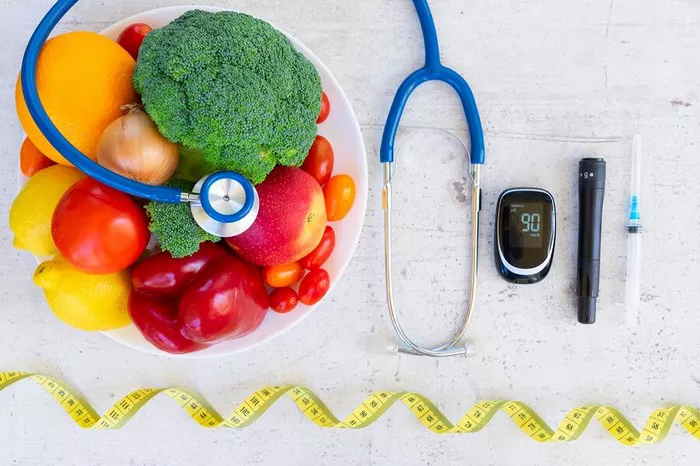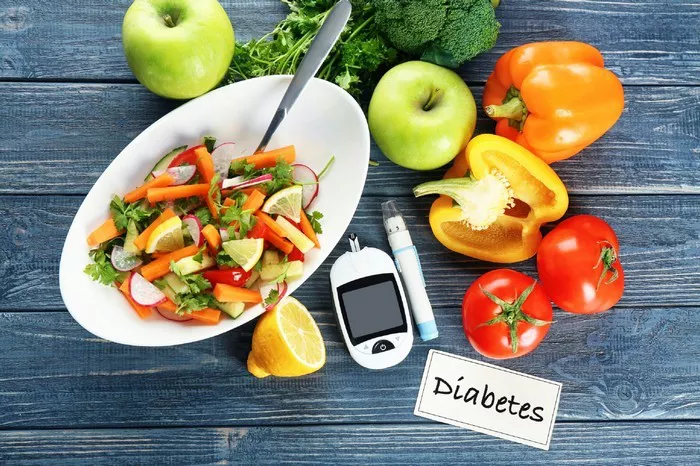Diabetes, whether type 1, type 2, or gestational, is a chronic condition that affects how your body processes blood sugar (glucose). One of the most important aspects of managing diabetes is regulating blood sugar levels through a well-balanced diet. Among the key dietary components, vegetables play a vital role in controlling blood sugar levels while providing essential nutrients and fiber.
When it comes to diabetes management, the choice of vegetables is not just about avoiding starchy options, but also about selecting those that provide low glycemic index (GI) foods that can help stabilize blood sugar levels. Vegetables also offer a wealth of vitamins, minerals, antioxidants, and fiber, all of which are important for the overall health of someone with diabetes.
In this article, we will explore the best vegetables for diabetics, how they contribute to blood sugar regulation, and how to incorporate them into your daily meals.
Why Vegetables are Essential for Diabetics
Diabetics should aim to manage their blood glucose levels effectively to prevent complications like heart disease, nerve damage, kidney problems, and vision loss. Vegetables are an essential part of a diabetes-friendly diet because they are:
Low in Calories: Most vegetables are naturally low in calories, which is important for people with diabetes who may be at risk for obesity or trying to manage their weight.
High in Fiber: Fiber helps to slow the absorption of sugar into the bloodstream, which can help prevent blood sugar spikes after meals. High-fiber vegetables include leafy greens, cruciferous vegetables, and root vegetables (in moderation).
Rich in Antioxidants: Vegetables like spinach, kale, and tomatoes are packed with antioxidants, which help reduce inflammation and oxidative stress—a condition often linked to diabetes complications.
Low Glycemic Index (GI): Vegetables generally have a low GI, meaning they cause a slower, steadier rise in blood sugar compared to high-GI foods. This can help diabetics maintain stable blood sugar levels throughout the day.
Packed with Nutrients: Diabetics need a range of vitamins and minerals to stay healthy. Vegetables provide nutrients such as magnesium, potassium, and folate, which help regulate blood pressure and support overall metabolic function.
The Best Vegetables for Diabetics
When choosing vegetables for a diabetic diet, it’s important to focus on non-starchy varieties and those with a low glycemic index. The following vegetables are highly beneficial for those with diabetes.
1. Leafy Greens
Leafy greens are some of the healthiest and most diabetes-friendly vegetables you can eat. They are low in calories, high in fiber, and packed with vitamins and minerals. Some of the most popular leafy greens include:
Spinach: Rich in magnesium, vitamin K, and folate, spinach helps to improve insulin sensitivity. It is also an excellent source of iron, which is important for overall health. Spinach has a very low glycemic index, making it a perfect choice for diabetics.
Kale: High in antioxidants like vitamins A, C, and K, kale is also a good source of fiber and calcium. It can help reduce oxidative stress and inflammation, which is important in managing diabetes.
Swiss Chard: Another leafy green, Swiss chard is loaded with nutrients like magnesium, potassium, and vitamins A and K. Magnesium is essential for blood sugar control and is often deficient in diabetics.
Collard Greens: Collard greens are rich in fiber, folate, and vitamin K. They are low in carbs and high in antioxidants, making them an excellent choice for blood sugar management.
2. Cruciferous Vegetables
Cruciferous vegetables, such as broccoli, cauliflower, and Brussels sprouts, are rich in fiber and have powerful anti-inflammatory properties. They are also low in calories and carbs, making them great for controlling blood sugar levels. Key cruciferous vegetables for diabetics include:
Broccoli: Broccoli is a powerhouse vegetable, packed with vitamin C, folate, fiber, and antioxidants. It has a low glycemic index, making it suitable for stabilizing blood glucose levels. The high fiber content also supports digestion and helps regulate blood sugar.
Cauliflower: Cauliflower is another low-carb vegetable with numerous health benefits. It’s an excellent source of vitamin C and fiber, both of which are essential for diabetes management. Additionally, cauliflower can be used as a substitute for higher-carb foods like rice and potatoes, making it a great option for people looking to lower their carb intake.
Brussels Sprouts: Brussels sprouts are high in fiber, which helps slow the absorption of glucose. They also contain vitamin C and antioxidants, which can help protect against the cellular damage caused by high blood sugar levels.
3. Non-Starchy Root Vegetables
While root vegetables like potatoes are often avoided due to their high glycemic index, there are some root vegetables that are lower in carbs and suitable for a diabetic diet. These include:
Carrots: Carrots are a great source of beta-carotene, an antioxidant that helps protect the eyes and supports overall health. They are also rich in fiber and have a low glycemic index, making them ideal for blood sugar regulation.
Beets: Beets contain compounds that can improve blood flow and help lower blood pressure. They are also rich in folate and fiber. While beets contain more sugar than some other vegetables, they are still a good choice when eaten in moderation.
Sweet Potatoes: Although slightly higher in carbohydrates than other root vegetables, sweet potatoes have a lower glycemic index than regular potatoes, making them a better option for diabetics. They are packed with fiber, vitamin A, and potassium, all of which are beneficial for blood sugar control.
4. Peppers
Bell peppers, particularly those that are red, yellow, and orange, are packed with antioxidants, including vitamin C and beta-carotene. They are low in calories and high in fiber, making them an excellent choice for diabetics. Some benefits of peppers include:
Red Bell Peppers: These are a rich source of vitamin C, which can help reduce inflammation and improve blood vessel function, a key factor in managing diabetes. The high fiber content also aids in blood sugar control.
Green Bell Peppers: Green peppers are low in calories and packed with essential nutrients like vitamin A and vitamin K. They also have a mild flavor, making them versatile in salads, stir-fries, and other diabetic-friendly dishes.
5. Tomatoes
Tomatoes are rich in lycopene, an antioxidant known for its potential to protect against heart disease. They are also an excellent source of vitamin C and potassium, which are both beneficial for blood sugar regulation and overall health. The glycemic index of tomatoes is low, which means they won’t cause a rapid spike in blood sugar levels.
Tomatoes: Fresh tomatoes are naturally low in carbs and provide a good source of fiber. They can be eaten raw in salads or used in sauces for a variety of diabetic-friendly dishes.
6. Asparagus
Asparagus is a low-calorie, low-carb vegetable that is high in folate, fiber, and antioxidants. The fiber helps to improve digestion and blood sugar control, while the antioxidants can help reduce inflammation and oxidative stress in the body. Asparagus is a great option for diabetics looking for a nutrient-dense vegetable.
7. Zucchini
Zucchini is a low-carb, nutrient-rich vegetable that can be used in a variety of diabetic-friendly dishes. It’s high in vitamin C, which helps with immune function, and has a mild flavor that pairs well with many other vegetables. Zucchini also provides a good amount of fiber, which can help regulate blood sugar levels.
8. Cucumbers
Cucumbers are another low-carb, hydrating vegetable that’s perfect for a diabetic diet. They are low in calories, high in water content, and a good source of vitamin K. Cucumbers are excellent for adding bulk to meals without raising blood sugar levels.
Incorporating Vegetables into a Diabetic Diet
Incorporating a variety of these diabetes-friendly vegetables into your daily diet can help improve blood sugar control and provide essential nutrients. Here are some ideas for adding vegetables to your meals:
Salads: Combine leafy greens like spinach, kale, or arugula with cucumbers, bell peppers, and tomatoes to create a nutritious salad. Dress with olive oil and lemon juice for a healthy fat option.
Stir-Fries: Stir-fry cruciferous vegetables like broccoli, cauliflower, and Brussels sprouts with a small amount of olive oil or coconut oil. Add lean protein like chicken or tofu for a balanced meal.
Soups: Make hearty vegetable soups with non-starchy vegetables like zucchini, carrots, and celery. You can also add legumes like lentils or beans for extra fiber and protein.
Roasted Vegetables: Roast root vegetables like sweet potatoes and beets with olive oil, garlic, and herbs. Roasting enhances their flavor and makes for a delicious, healthy side dish.
Smoothies: Add leafy greens like spinach or kale to smoothies for a nutrient boost. Pair them with other low-carb vegetables like cucumbers or zucchini, and add unsweetened almond milk or Greek yogurt for creaminess.
Conclusion
Incorporating a variety of non-starchy, fiber-rich vegetables into your diet is one of the most effective ways to manage diabetes. Vegetables are low in calories, high in fiber, and packed with essential vitamins and minerals that promote overall health. Whether you prefer leafy greens, cruciferous vegetables, or root vegetables, there are many options that will help keep your blood sugar levels stable while providing essential nutrients.
By making smart vegetable choices and pairing them with other diabetes-friendly foods, you can develop a meal plan that supports your health and well-being. Always consult with your healthcare provider or a registered dietitian to tailor your diet to your specific needs.
Related topics:
How Many Fruits Should Diabetics Eat Per Day?



























